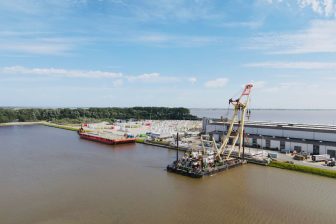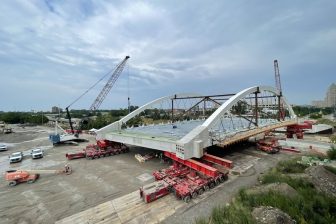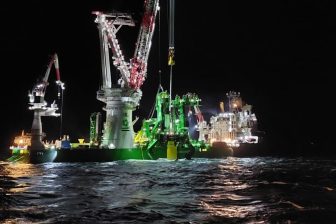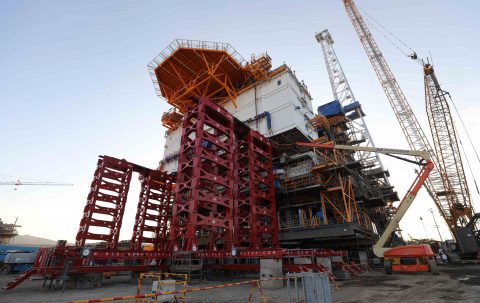
Mammoet lifts heavy in Vietnam
Mammoet has seen through a four-phase project for the Sao Vang and Dai Nguyet (SVDN) gas and condensate development in Vietnam for PTSC Mechanical & Construction Company. Mammoet’s contribution to the development project included load out of the Sao Vang jacket, flare tip installation, installation of the living quarters module and topsides integration with a deck support frame.
The project’s first phase involved load-out of the jacket weighing in at 12,733 tons. Due to its large dimensions – 131m x 81.7m x 56m – Mammoet utilised a strand jack load-out system to provide a feasible and cost-effective solution.
The jacket was built with a launch truss on skid beams, with breakout jacks used to initiate movement of the jacket from its assembly position before strand jacks and winches began the main pulling operation. The barge was equipped with external high-capacity submersible ballast pumps, which were synchronised with the barge’s internal pumping system. The internal ballast system was then used for de-ballasting with Mammoet monitoring and controlling ballasting from the barge bridge.
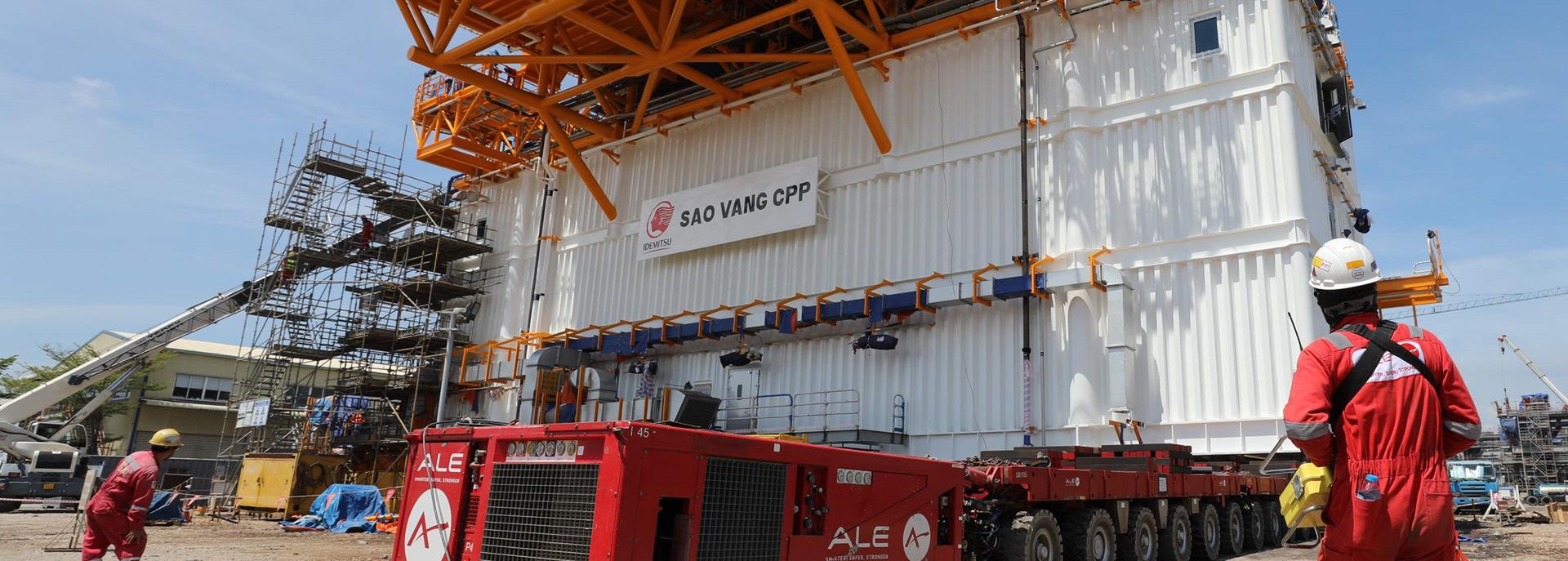
Lifting the flare tip and living quarters
The topside’s 100 metre high vertical flare stack needed to be fitted with its flare tip. Installation of the 2-ton flare tip was performed by Mammoet’s Conbit team. As for the living quarters, this module was transported via 56 axle-lines of Self-Propelled Modular Transporters (SPMT) to the topside area, where four Mega Jack 5200 towers were positioned alongside the topside. The LQ module was then placed on top of the Mega Jack 5200 system for lifting to a height of 18.6 metres. Next, the Mega Jack towers were connected by link beams to the topside, allowing the LQ module to be skidded into its final location on the deck.
The Mega Jack system was later repositioned underneath the 14,000-ton main deck to jack-up to a height of 18 metres. The deck support frame was then skidded beneath the topside, which was then lowered and integrated with the deck support frame.
Mammoet loads out the 15,000-ton structure
The final phase of the project involved major logistical challenges, with equipment and people travelling from various countries under a tight schedule. The coronavirus outbreak added further complexity to this, so Mammoet worked closely with the customer to mobilise people into Vietnam, including obtaining special visa approval from the Vietnamese government.
Mammoet was able to efficiently load-out the entire topside structure, by this point weighing 15,608 tons, using the same strand jack equipment that had been employed for the earlier jacket load-out. This was a highly complex project, involving a wide range of services, people, and equipment mobilised from various Asia Pacific countries, the Netherlands and United Kingdom. The entire project was completed with zero accidents or incidents.
The SVDN field development project was approved by the Vietnamese government in 2017 and will produce up to over 1.5 billion cubic metres of gas and over 0.5 million barrels of condensate annually.

